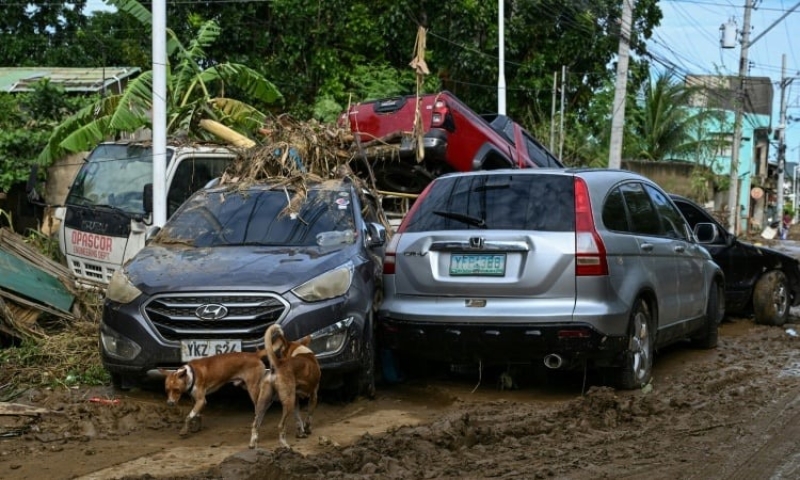- Tarique Calls for United Effort to Build a Safe Bangladesh |
- Tarique leaves for 300 feet area from airport |
- BNP top leaders welcome Tarique Rahman on homecoming |
- Flight carrying Tarique, family lands in Dhaka |
- Red bus with ‘Bangladesh first’ slogan ready at Dhaka airport for Tarique |
Philippines Counts 140 Dead as Typhoon Moves to Vietnam

Typhoon Kalmaegi has killed at least 140 people and left 127 others missing after triggering destructive flooding and landslides across the central Philippines, officials confirmed on Thursday, as the storm moves towards Vietnam.
Cebu province was among the worst affected, with floodwaters described as unprecedented, sweeping away vehicles, riverside homes and large cargo containers. Local authorities said dozens of bodies have been recovered in Liloan and surrounding areas, where entire neighbourhoods remain buried in mud and debris.
Residents recounted moments of desperation as waters rose rapidly inside their homes, forcing families to flee through windows or climb onto rooftops.
On neighbouring Negros Island, heavy rainfall loosened volcanic material from the slopes of Mount Kanlaon, sending mudflows into communities and burying houses.
The national disaster agency also reported six military personnel killed when a helicopter on a relief mission crashed during the storm.
Cleanup and recovery efforts continued on Thursday as local authorities warned of possible disease outbreaks in waterlogged areas. Nearly 800,000 people have been displaced from their homes.
Kalmaegi is strengthening over the sea as it approaches central Vietnam, where authorities are preparing for landfall later on Thursday. Forecasters warn the storm may bring waves up to eight metres high, storm surges and more heavy rainfall.
Scientists note that stronger and more destructive storms are becoming more frequent as ocean temperatures rise, intensifying typhoons and increasing rainfall.

